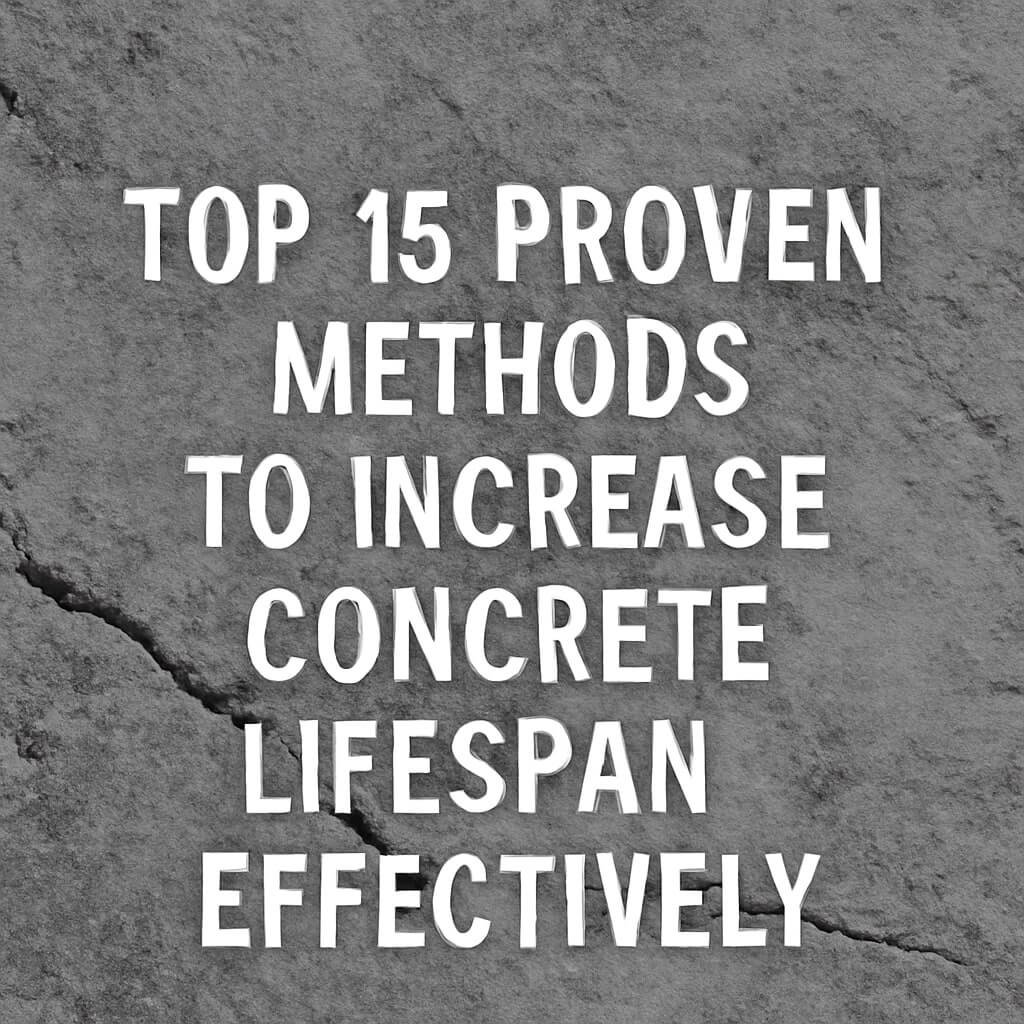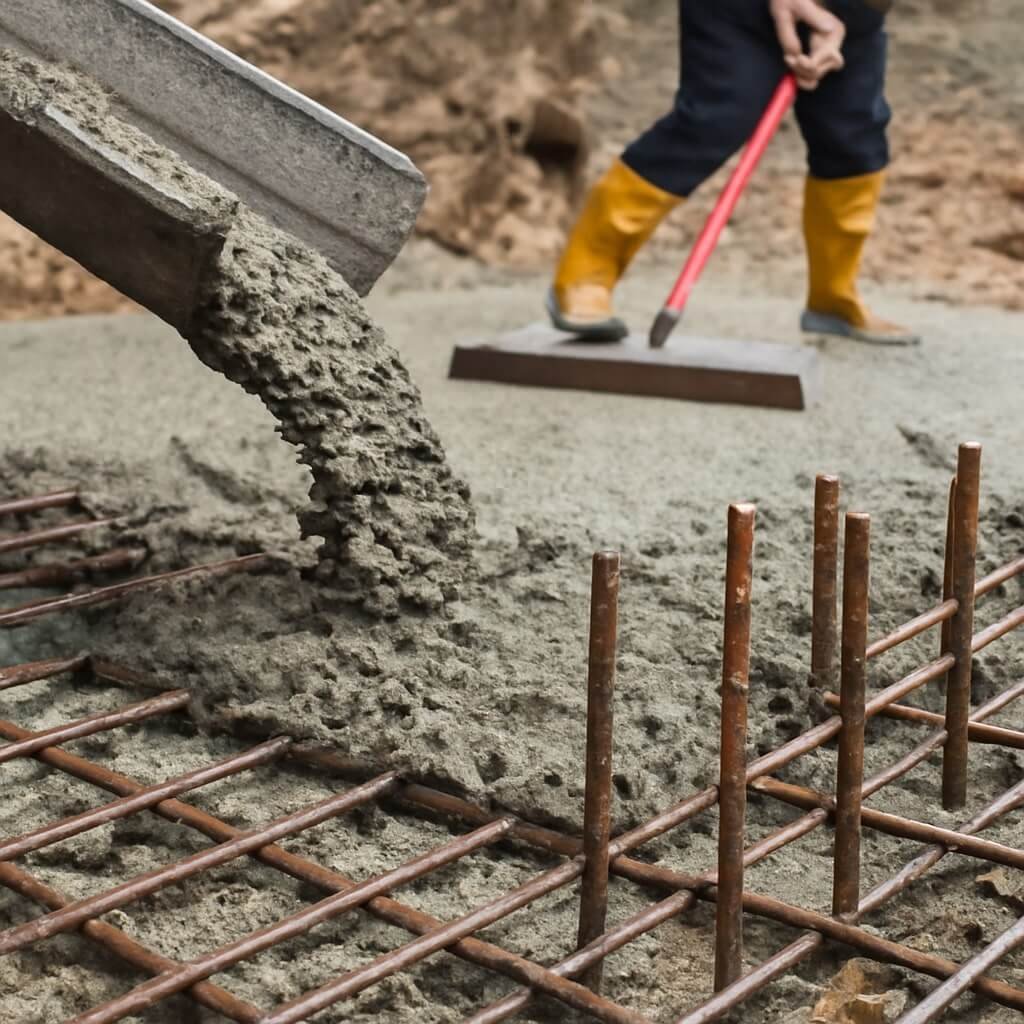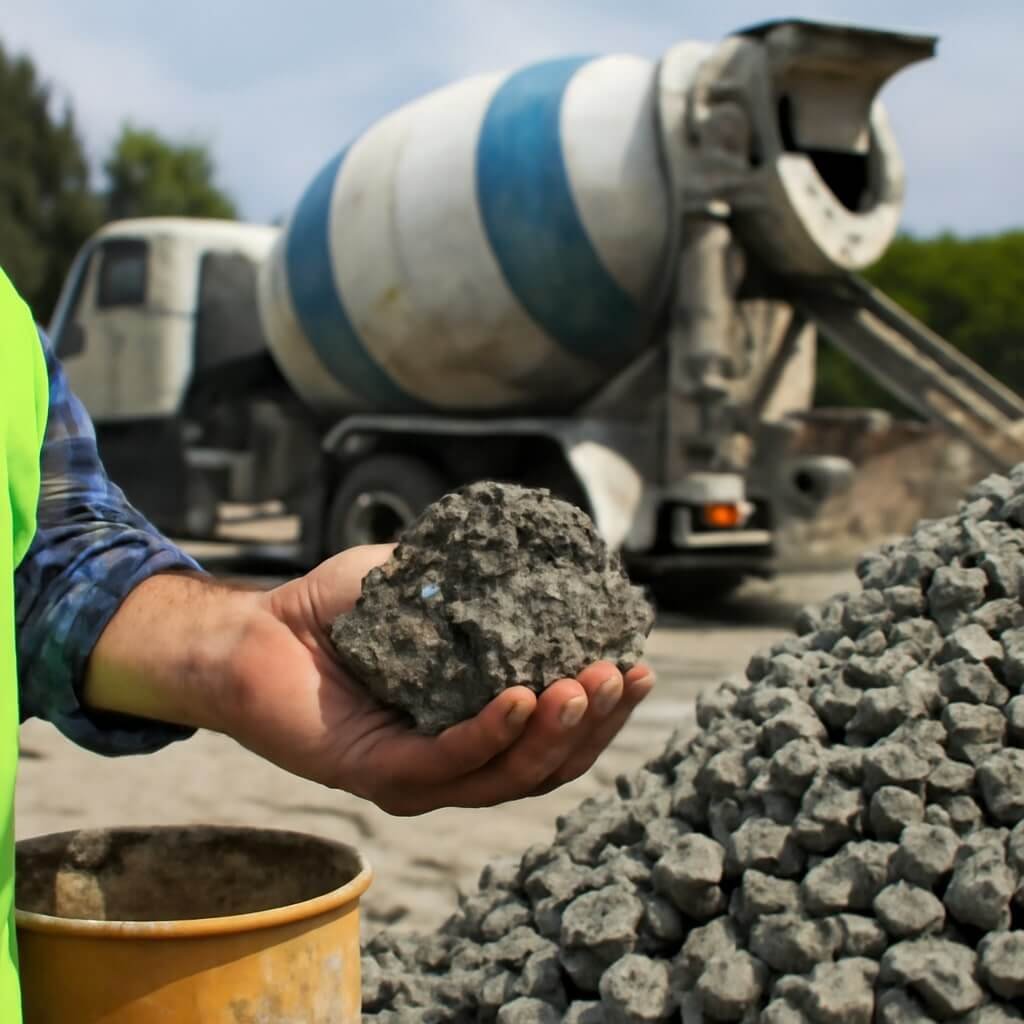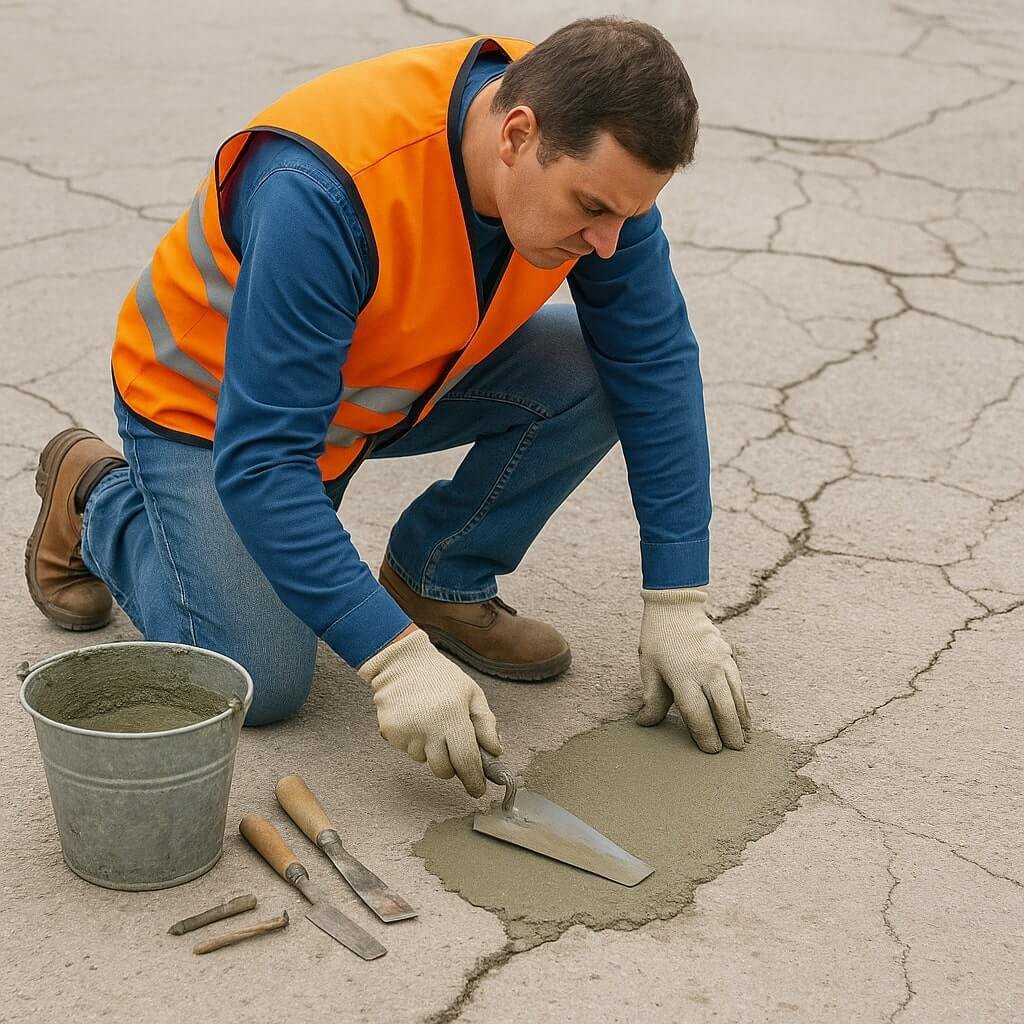Concrete is one of the most widely used construction materials worldwide, yet its durability depends greatly on how well we manage its lifespan. Understanding how to increase concrete lifespan is crucial for ensuring the long-term stability, safety, and cost-efficiency of any concrete structure. This article explores 15 powerful and proven methods to effectively increase the lifespan of concrete, offering insights into best practices that can save time and money in the long run.
Understanding Concrete Lifespan: Why It Matters

Concrete lifespan refers to the duration a concrete structure remains functional and safe without major repairs or failure. Increasing concrete lifespan reduces maintenance costs, environmental impact, and improves structural safety. Many factors affect durability, from the quality of raw materials to environmental exposure and maintenance regimes.
For construction professionals and homeowners alike, knowing how to increase concrete lifespan means investing in the future and ensuring structural integrity that can withstand daily wear, weathering, and unforeseen stresses.
Factors Affecting Concrete Lifespan
Several key factors influence how long concrete will last:
- Material quality: The purity and grade of cement, aggregates, and admixtures impact strength and resistance.
- Mix design: Water-cement ratio and proper proportioning affect porosity and durability.
- Curing conditions: Proper moisture and temperature management ensure proper hydration.
- Environmental exposure: Freeze-thaw cycles, chemical exposure, and humidity levels can cause degradation.
- Load and usage: Heavy traffic, vibrations, or mechanical stresses can accelerate deterioration.
- Maintenance: Regular inspections and timely repairs prevent small issues from becoming major problems.
By controlling these factors, concrete’s lifespan can be significantly extended.
Method 1: Use High-Quality Raw Materials
The foundation of durable concrete starts with quality raw materials. Cement, aggregates, and admixtures should meet established standards to ensure strength and resilience.
- Cement: Use Portland cement with appropriate chemical composition and minimal impurities.
- Aggregates: Clean, well-graded, and properly sized aggregates reduce voids and increase density.
- Admixtures: Quality admixtures improve workability and durability.
Avoiding contaminated or substandard materials reduces the risk of early cracking, shrinkage, and chemical reactions like alkali-silica reaction (ASR) which can damage concrete internally.
Method 2: Optimize Mix Design
The mix design of concrete significantly impacts its lifespan. The water-cement ratio is the most critical factor; lower ratios reduce porosity and improve strength but must be balanced with workability.
Key tips for mix optimization include:
- Keeping water-cement ratio typically between 0.4 and 0.5.
- Using well-graded aggregates to reduce void content.
- Incorporating supplementary cementitious materials for improved durability.
- Testing mixes to meet both mechanical and environmental requirements.
Optimized mix designs improve impermeability, minimizing water ingress and reducing corrosion risk to reinforcement bars.
Method 3: Incorporate Supplementary Cementitious Materials (SCMs)
SCMs such as fly ash, silica fume, and slag are by-products that can enhance concrete’s durability and reduce environmental footprint.
- Fly ash improves workability and reduces heat of hydration.
- Silica fume significantly increases compressive strength and reduces permeability.
- Slag cement improves sulfate resistance and reduces chloride penetration.
Using SCMs properly can increase concrete lifespan by making it more resistant to chemical attack and mechanical wear.
Method 4: Employ Proper Curing Techniques
Curing is essential for concrete to develop its designed strength and durability. It ensures the hydration process continues properly, reducing cracks and shrinkage.
Effective curing methods include:
- Moist curing: Keeping the concrete surface wet for 7-14 days.
- Curing compounds: Applying membrane-forming compounds that retain moisture.
- Wet coverings: Using burlap or plastic sheets to prevent moisture loss.
Proper curing prevents early-age cracking and improves concrete density, directly impacting lifespan.
Method 5: Use Chemical Admixtures Effectively
Chemical admixtures help tailor concrete properties for enhanced durability.
Common admixtures include:
- Water reducers to lower water content without sacrificing workability.
- Corrosion inhibitors to protect steel reinforcement from rust.
- Air-entraining agents to improve freeze-thaw resistance.
Selecting the right admixture based on exposure conditions can greatly increase concrete lifespan.
Method 6: Ensure Proper Placement and Compaction
Concrete must be placed and compacted correctly to avoid voids, honeycombing, and weak spots.
Best practices:
- Use mechanical vibration to consolidate concrete fully.
- Avoid segregation by placing concrete carefully.
- Ensure formwork is clean and rigid to maintain shape.
Proper placement and compaction maximize density and strength, reducing ingress of harmful substances.
Method 7: Protect Concrete from Environmental Damage
Concrete exposed to harsh environments suffers from weathering, chemical attack, and abrasion. Applying protective measures can greatly extend lifespan.
- Sealants and coatings: Water repellents and epoxy coatings reduce permeability.
- Waterproofing membranes: Essential for foundations and submerged structures.
- Surface treatments: Silane and siloxane treatments repel water and contaminants.
Protecting concrete from moisture and chemicals prevents common degradation mechanisms.
Method 8: Control Cracking Through Reinforcement and Joints
Cracking is a major threat to concrete durability. Proper reinforcement and joint design control crack widths and distribution.
- Steel reinforcement: Provides tensile strength and crack control.
- Control joints: Allow movement without uncontrolled cracking.
- Expansion joints: Absorb thermal and shrinkage movements.
Minimizing crack widths prevents water and chloride ingress, prolonging lifespan
Method 9: Regular Maintenance and Inspection
Concrete requires ongoing care to remain durable. Scheduled inspections identify issues early for timely repair.
- Clean surfaces to remove harmful chemicals and debris.
- Repair minor cracks and spalls quickly.
- Monitor and replace damaged sealants or coatings.
Routine maintenance prevents costly repairs and extends service life.
Method 10: Employ Advanced Concrete Technologies

Innovations like fiber reinforcement and self-healing concrete push durability further.
- Fiber-reinforced concrete: Improves toughness and crack resistance.
- Self-healing concrete: Uses bacteria or polymers to seal cracks autonomously.
These technologies are increasingly practical for critical infrastructure with demanding lifespan requirements.
Method 11: Use Proper Drainage Systems Around Concrete
Standing water accelerates deterioration. Proper drainage ensures water does not pool near concrete foundations or slabs.
Effective drainage includes:
- Grading soil away from structures.
- Installing drains and gutters.
- Using permeable pavements to reduce runoff.
Good drainage minimizes water exposure, a key factor in extending concrete lifespan.
Method 12: Avoid Deicing Chemicals or Use Alternatives
Deicing salts cause corrosion and scaling in concrete. Limiting their use or opting for less aggressive alternatives reduces damage.
Alternatives:
- Sand or gravel for traction.
- Calcium magnesium acetate, less corrosive chemical deicers.
Preventing chemical damage helps maintain concrete integrity longer.
Method 13: Implement Environmental Control During Construction
Temperature and humidity influence concrete curing and early durability.
Recommendations:
- Avoid pouring concrete in extreme cold or heat.
- Use heaters, insulation, or misting systems to regulate environment.
- Plan construction schedules to optimize curing conditions.
Controlling environmental factors during construction reduces cracking and improves long-term strength.
Method 14: Use Protective Barriers in High Traffic Areas
Wear and abrasion degrade concrete surfaces in busy areas like roads and warehouses.
Solutions:
- Apply wear-resistant overlays.
- Use polymer-modified concrete or epoxy coatings.
- Implement mats or protective covers where feasible.
These barriers reduce surface deterioration and extend functional lifespan.
Method 15: Educate Personnel on Best Practices
Training workers and site managers on concrete handling and maintenance ensures all measures to increase lifespan are properly implemented.
Key training points:
- Correct mixing, placing, and curing techniques.
- Importance of timely repairs and inspections.
- Awareness of environmental impacts.
Informed teams are vital for sustaining concrete durability on any project.
Frequently Asked Questions (FAQs)
How long does concrete typically last?
Can old concrete be made to last longer?
What is the best way to prevent cracking in concrete?
Are chemical admixtures necessary for all concrete projects?
How does water-cement ratio affect concrete lifespan?
What maintenance is required for concrete exposed to weather?
Conclusion: Enhancing Concrete Durability for Long-Term Benefits
Increasing concrete lifespan is both a science and an art. By carefully selecting materials, optimizing mix design, employing proper curing, protecting against environmental damage, and maintaining the structure, concrete can provide lasting strength and safety. Implementing these 15 proven methods not only ensures durability but also offers economic and environmental benefits.



